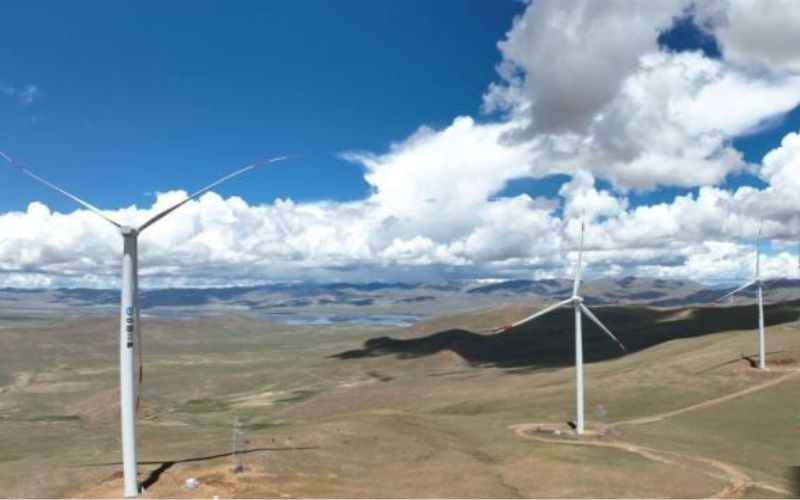
China's highest wind farm, situated in the ecologically sensitive Tibet, commenced power generation on August 3, 2023, according to China Three Gorges Corp, the operator of the facility. With a substantial installed capacity of 72.6 megawatts and the distinction of being China's largest ultra-high-altitude facility, the wind power project operates at heights ranging from 3,500 meters to 5,500 meters.
The Chinese government is exploiting Tibet by dumping toxic waste in the Himalayan country, effectively destroying its environment. According to reports cited by Tibet Press, Beijing sees Tibet as a waste deposit zone rather than a "safe haven" further depriving the controlled Tibetan territories of basic sustainable waste treatment methods. China also does not provide adequate resources to protect the country in the Himalayan foothills, its significant and unique biome.
The exploitation of Tibet's rich natural resources has long been a point of concern, and the establishment of large-scale wind farms could further exacerbate the situation. The construction of wind turbines often involves deforestation, leading to habitat loss and the disruption of delicate ecosystems. Additionally, noise pollution from the turbines can negatively impact wildlife, affecting their survival and reproduction rates.
Subsequently, excessive industrial mining in the occupied territories of Tibet has also robbed the country of its natural resources, leaving the land barren and infertile, Tibet Press reported.
Despite massive outrage against the lack of adequate response to climate change, China seems barely bothered about the Tibetan ecosystem, culture, and/or historic values. China has repeatedly failed to acknowledge its serious anti-climate policies. The White Paper of Tibet, titled 'Tibet since 1951: Liberation, Development and Prosperity from China turned a blind eye to the concerns regarding the level of destruction of natural resources in Tibet. Neglecting the main concerns, the paper highlighted the need to make infrastructural development, further portraying the Chinese President Xi Jinping-led government in good light that was wanting to take eco-friendly steps in Tibet.
Furthermore, Tibet's environment is already facing a crisis due to over-harvesting of natural resources by Chinese authorities, leading to pollution and ecological degradation. The region's unique ecosystem is at risk, and any new development must be undertaken with utmost caution to minimize further damage.
Tibet's unique ecosystem, already facing challenges due to climate change, is further at risk due to large-scale infrastructure development and resource extraction. The rapid pace of wind power expansion, while contributing to the country's ambitions to peak carbon emissions by 2030 and achieve carbon neutrality by 2060, demands careful consideration of the environmental consequences.
As China continues to embrace wind power as a significant component of its clean energy transition, it is vital for authorities to prioritize environmental protection and consider the long-term consequences of such projects. It is incumbent upon provincial-level regions, like Tibet, to lead the development of clean energy and champion responsible practices that do not compromise the ecological balance and unique biodiversity of the region.
While achieving carbon neutrality is commendable, it must not come at the cost of irreparable environmental damage. Striking a balance between renewable energy development and environmental conservation should remain at the forefront of China's green energy initiatives.
Edited and collated by Team TRC